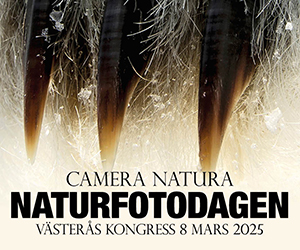Perforerat har det nog varit hela tiden, annars blir det svårt att mata för rörlig bild, men det finns mer än en sorts perforering. Det är samma filmbredd, men film för rörlig bild matas vertikalt och inte horisontellt. Alltså är bildrutan större i stillbildslösningen.
Här är faktan bakom 35 mm formatet:
The 135 film size is derived from earlier still cameras using lengths of 35 mm cine film, the same size as, but with different perforations than, 135 film. The 35 mm film standard for motion picture film was established in Thomas Edison's lab by William Kennedy Laurie Dickson. Dickson took 70 mm film stock supplied by George Eastman's Eastman Kodak Company. The 70 mm film was cut lengthwise into two equal width (35 mm) strips, spliced together end to end, and then perforated along both edges. The original picture size was 18×24 mm (half the full frame size later used in still photography). There were four perforations on each side of a motion picture frame.
While the Leica camera popularized the format, several 35 mm still cameras used perforated movie film before the Leica was introduced in the 1920s. The first patent for one was issued to Leo, Audobard and Baradat in England in 1908. The first full-scale production camera was the Homeos, a stereo camera, produced by Jules Richard in 1913, and was sold until 1920. It took 18x24 mm stereo pairs, using two Tessar lenses.
In 1909, the French Étienne Mollier [fr] designed a device small-format photography, the "Cent-Vues [fr]", which used the 35 mm perforated film to take consecutive hundred views in 18×24 mm. He manufactured, won the gold medal in the Concours Lépine, and in 1910 sold at a small scale and without much success.
The first big-selling 35 mm still camera was the American Tourist Multiple, which also appeared in 1913, at a cost of $175 (at today's prices, the same cost as a modern $3000 Leica.) The first camera to take full-frame 24×36 mm exposures seems to be the Simplex, introduced in the U.S. in 1914. It took either 800 half-frame or 400 full-frame shots on 50 ft (15.2 m) rolls.
The Minigraph, by Levy-Roth of Berlin, another half-frame small camera was sold in Germany in 1915. The patent for the Debrie Sept camera, a combination 35 mm still and movie camera was issued in 1918; the camera sold from 1922.
The Furet camera made and sold in France in 1923 took full-frame 24x36 mm negatives, and was the first cheap small 35 mm camera of similar appearance to more modern models.







